Chart Color Schemes
est. as @ -- *
ABS ERP | -- people | --
2021 Census | -- people
Sales Activity
Curious about local property values? Filter the chart to assess the volume and appreciation (including resales) trends and regional comparisons, or scroll to the map below view this information at an individual property level.
Find a Recent Sale
Sales Detail
Population
Kurri Kurri - Abermain lies within the top quartile of areas nationally for population growth performance according to AreaSearch analysis of recent, and medium to long-term trends
Kurri Kurri - Abermain's population is around 23,141 as of August 2025. This reflects an increase of 2,510 people since the 2021 Census, which reported a population of 20,631. The change was inferred from the estimated resident population of 22,814 in June 2024 and an additional 671 validated new addresses since the Census date. This level of population equates to a density ratio of 255 persons per square kilometer. Kurri Kurri - Abermain's growth rate of 12.2% since the 2021 census exceeded the non-metro area (4.8%) and the state, marking it as a growth leader in the region. Population growth was primarily driven by interstate migration contributing approximately 68.4% of overall population gains during recent periods.
AreaSearch is adopting ABS/Geoscience Australia projections for each SA2 area released in 2024 with 2022 as the base year, and NSW State Government's SA2 level projections for areas not covered by this data, released in 2022 with 2021 as the base year. Growth rates by age group from these aggregations are applied to all areas for years 2032 to 2041. By 2041, a significant population increase is forecasted, with the area expected to expand by 8,680 persons based on the latest population numbers, recording a gain of 36.1% in total over the 17 years.
Frequently Asked Questions - Population
Development
The level of residential development activity in Kurri Kurri - Abermain was found to be higher than 90% of real estate markets across the country
Kurri Kurri - Abermain recorded approximately 212 residential properties granted approval annually, with a total of 1,060 homes approved between FY-21 and FY-25. In FY-26, 20 dwellings have been approved so far. On average, around 3.4 people moved to the area each year for every dwelling built over the past five financial years.
This indicates substantial demand outpacing supply, likely leading to heightened buyer competition and pricing pressures. The average construction cost value of new properties is $351,000, which is below the regional average, suggesting more affordable housing options for buyers. In FY-26, commercial development approvals have reached $17.6 million, indicating steady investment activity in the area.
When compared to the Rest of NSW, Kurri Kurri - Abermain maintains similar development levels per person, reflecting market balance consistent with the broader region. New building activity comprises 78.0% detached houses and 22.0% townhouses or apartments, preserving the area's low-density nature and attracting space-seeking buyers. With approximately 162 people moving in for every dwelling approval, Kurri Kurri - Abermain exhibits characteristics of a growth area. Projections indicate an increase of around 8,353 residents by 2041, with building activity keeping pace with these growth projections despite potential heightened competition among buyers as the population grows.
Frequently Asked Questions - Development
Infrastructure
Kurri Kurri - Abermain has moderate levels of nearby infrastructure activity, ranking in the top 50% nationally
Changes to local infrastructure significantly impact an area's performance. AreaSearch identified 13 projects likely affecting this area. Notable projects include Hunter Power Project at Kurri Kurri Power Station, Kurri Kurri Lateral Pipeline and Storage Project, Weston Public Preschool, and Heddon Greta-Cliftleigh Corridor Structure Plan. The following list details those most relevant.
Professional plan users can use the search below to filter and access additional projects.
INFRASTRUCTURE SEARCH
 Denotes AI-based impression for illustrative purposes only, not to be taken as definitive under any circumstances. Please follow links and conduct other investigations from the project's source for actual imagery. Developers and project owners wishing us to use original imagery please Contact Us and we will do so.
Denotes AI-based impression for illustrative purposes only, not to be taken as definitive under any circumstances. Please follow links and conduct other investigations from the project's source for actual imagery. Developers and project owners wishing us to use original imagery please Contact Us and we will do so.
Frequently Asked Questions - Infrastructure
Maitland Local Housing Strategy 2041
A comprehensive strategic planning framework adopted by Maitland City Council on 27 June 2023 and endorsed by the NSW Government on 9 September 2024. The strategy guides residential development and growth in the Maitland local government area through to 2041. It identifies areas for new housing, prioritizes infill development and housing diversity (including affordable housing) to meet the projected need for approximately 25,200 additional dwellings by 2041, and aligns infrastructure planning to support growth.
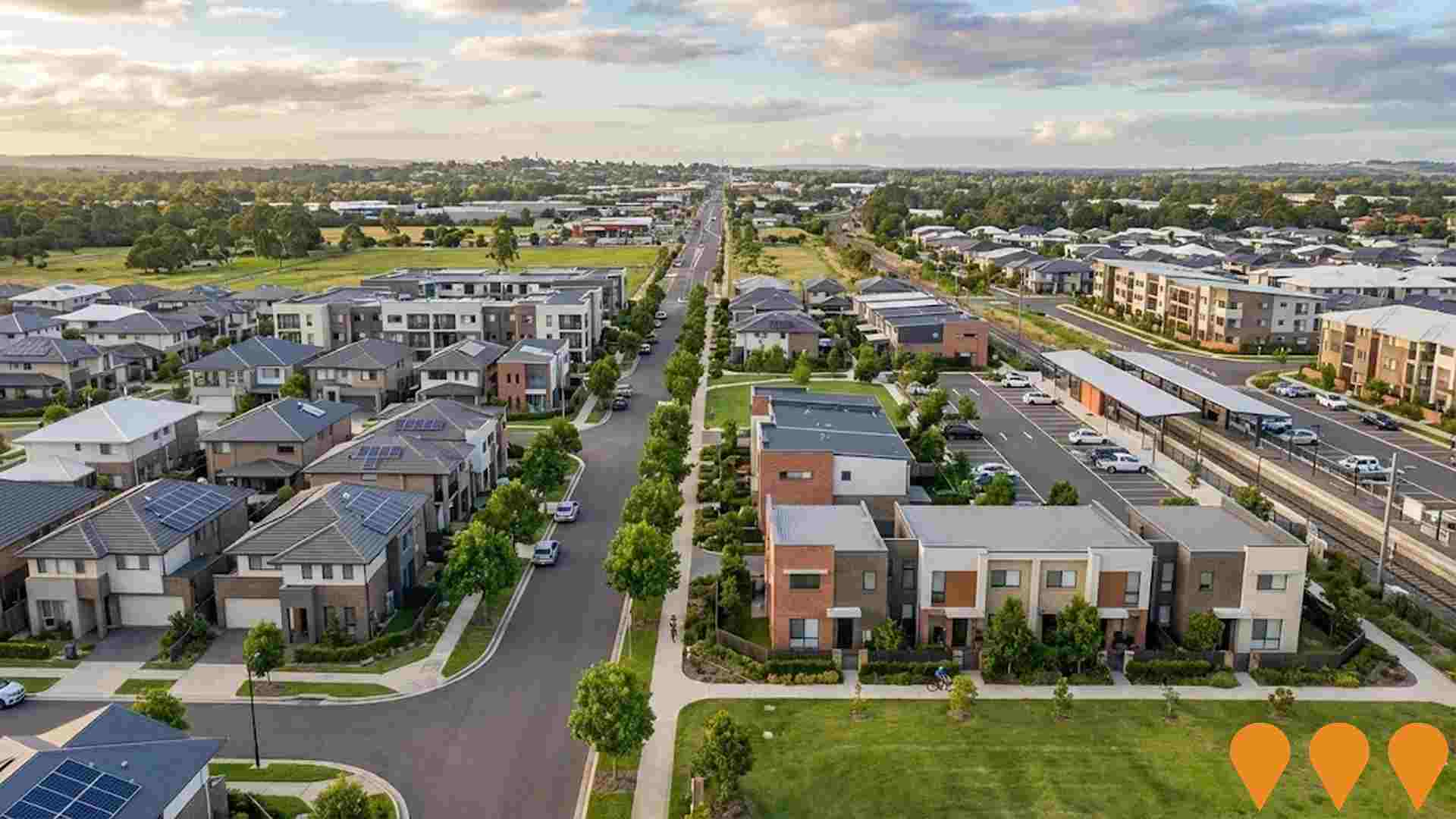
Cessnock Hospital Redevelopment
A $138 million hospital redevelopment featuring a new two-storey Acute Services Building. Construction officially commenced in June 2025. The new facility will include an expanded Emergency Department, operating theatres, day surgery spaces, two new inpatient wards (single and 2-bed rooms with ensuites), a new medical imaging service, a Central Sterilising Services Department (CSSD), and a modern pharmacy. The hospital will remain operational throughout the construction period, which is expected to be completed in late 2027, with the new facilities opening following operational commissioning in 2028.
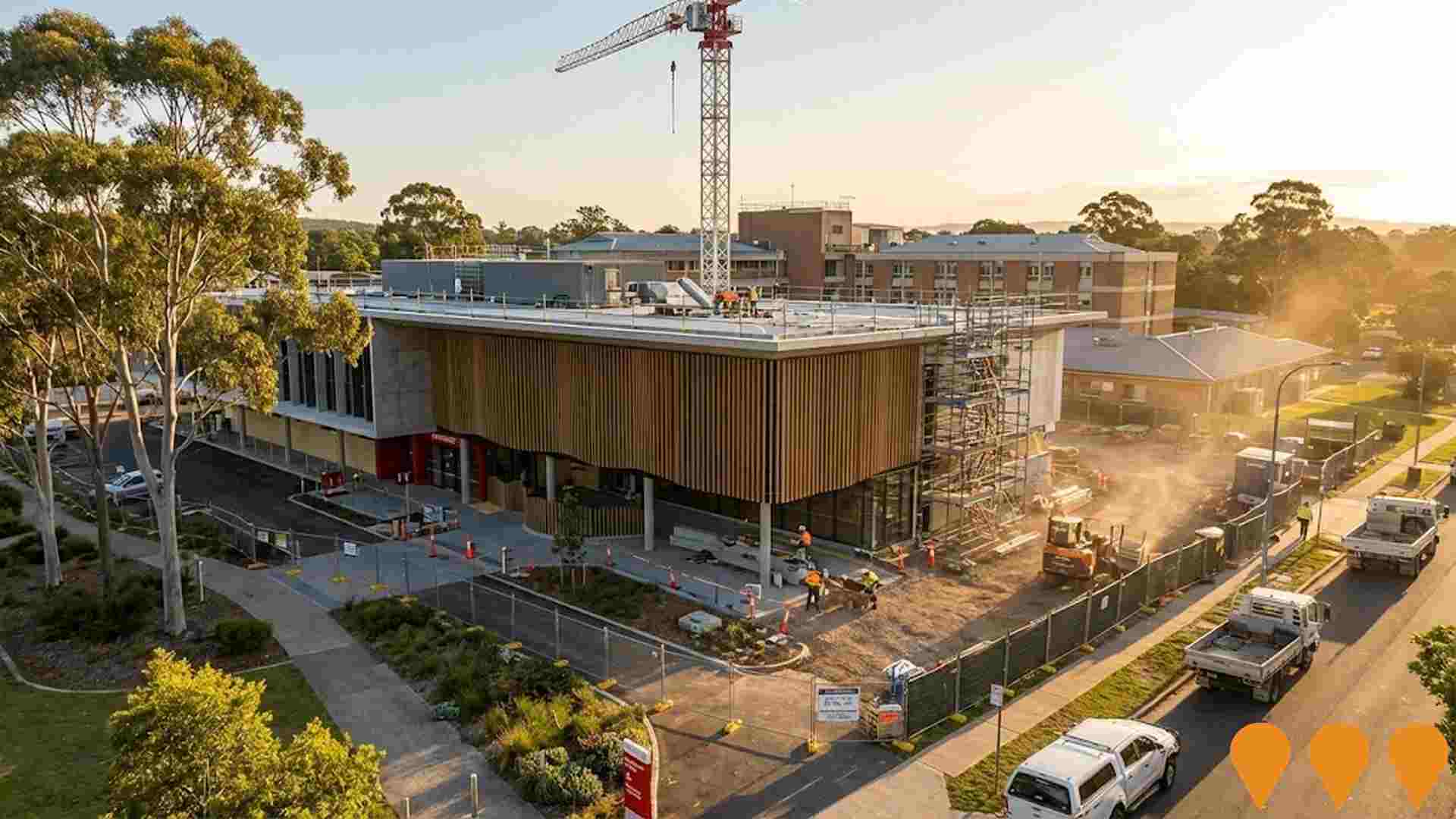
Heddon Greta - Cliftleigh Corridor Structure Plan
The Structure Plan was adopted by Cessnock City Council in August 2022. It identifies and addresses current and future infrastructure and servicing needs, road network, connectivity, open space, and liveability improvements in the urban corridor between Kurri Kurri and Maitland, encompassing Heddon Greta and Cliftleigh. Implementation commenced in September 2022.
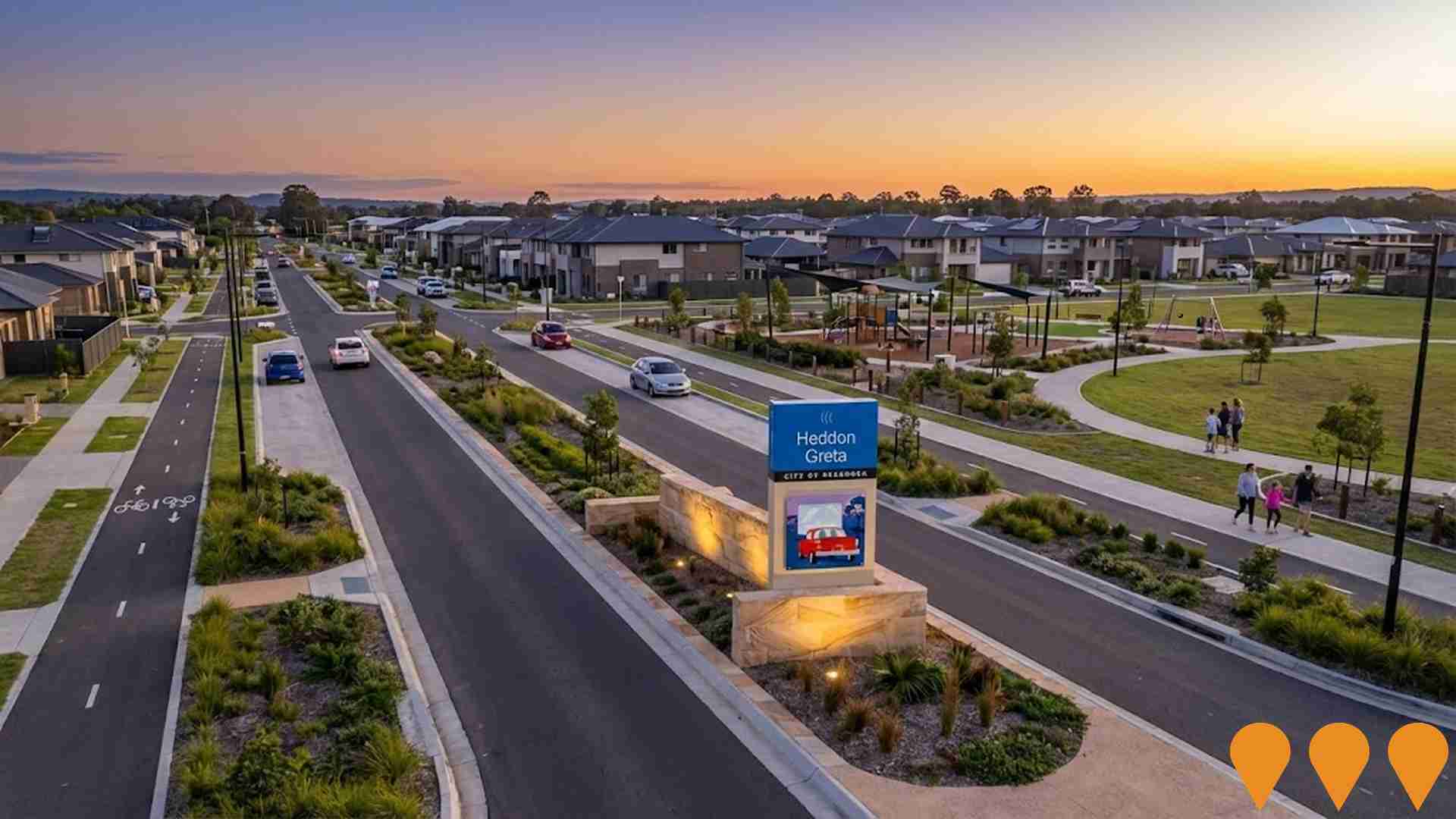
Hunter Power Project (Kurri Kurri Power Station)
Snowy Hydro is building a fast start open cycle gas power station at Kurri Kurri with two hydrogen ready turbines (initially up to 15 percent hydrogen blend). Initial capacity is 660 MW, with approvals up to 750 MW. Construction has progressed into testing and commissioning, including first fire of one turbine in July 2025 and initial test output to the grid. Gas supply infrastructure is in place; diesel is available as a backup fuel during commissioning and rare peak events.
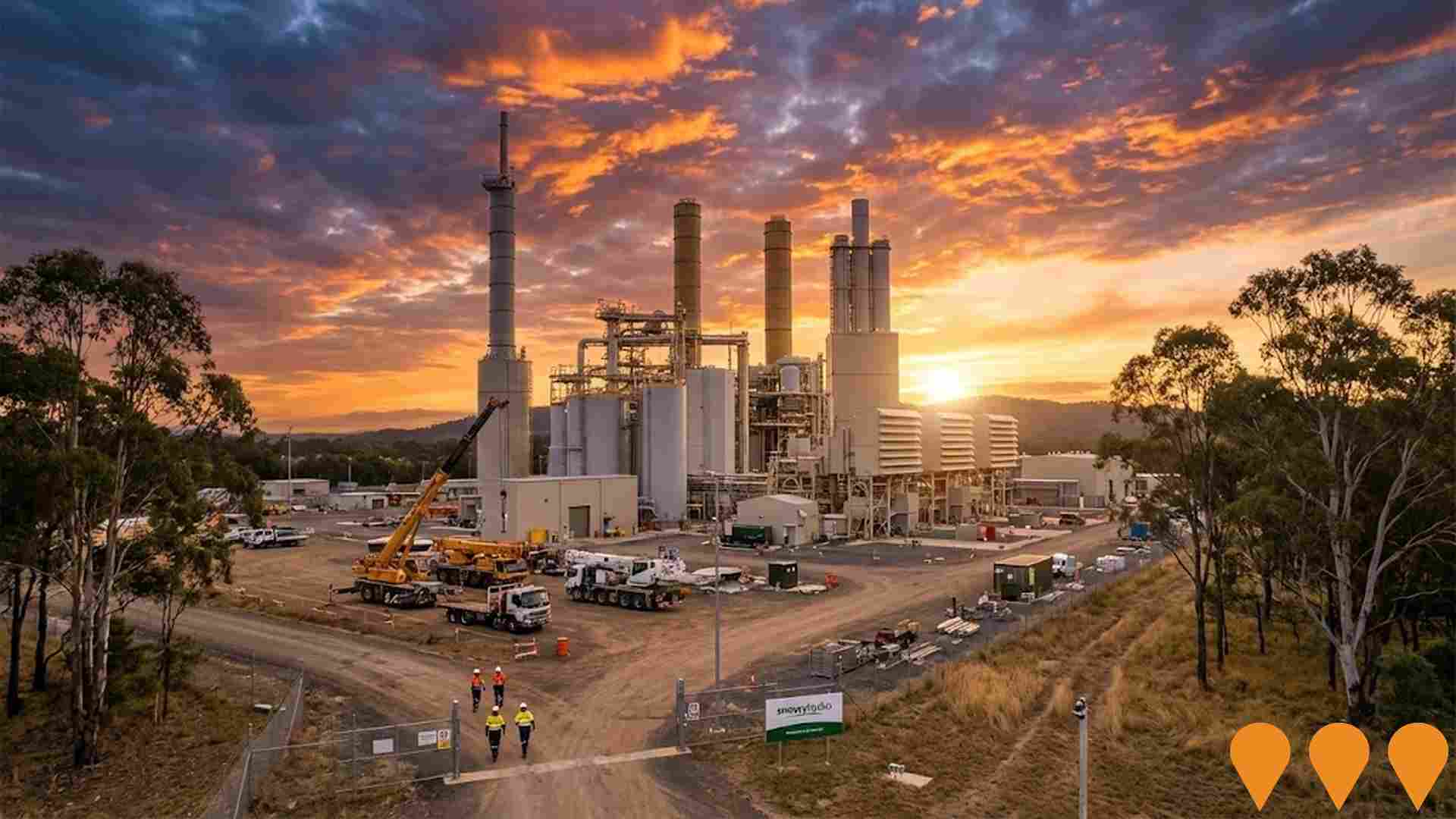
Kurri Kurri Lateral Pipeline (KKLP) and Storage Project
The KKLP is a 21km gas transmission pipeline and 24km larger diameter serpentine pipeline that functions as a storage reservoir. It will connect the Hunter Power Project in Kurri Kurri, NSW, to the existing Sydney to Newcastle pipeline. The project is critical for energy security in the Hunter region. The total investment is approximately A$450 million.

The Loxford Estate
A large-scale residential development featuring 354 approved homesites across 2000 hectares, with 800 hectares designated as environmental conservation land. Award-winning Hunter-based property developers McCloy Group & Stevens Group are delivering this masterplanned community where contemporary living meets wholesome family lifestyle, featuring vibrant public art, playgrounds, and mature street trees.
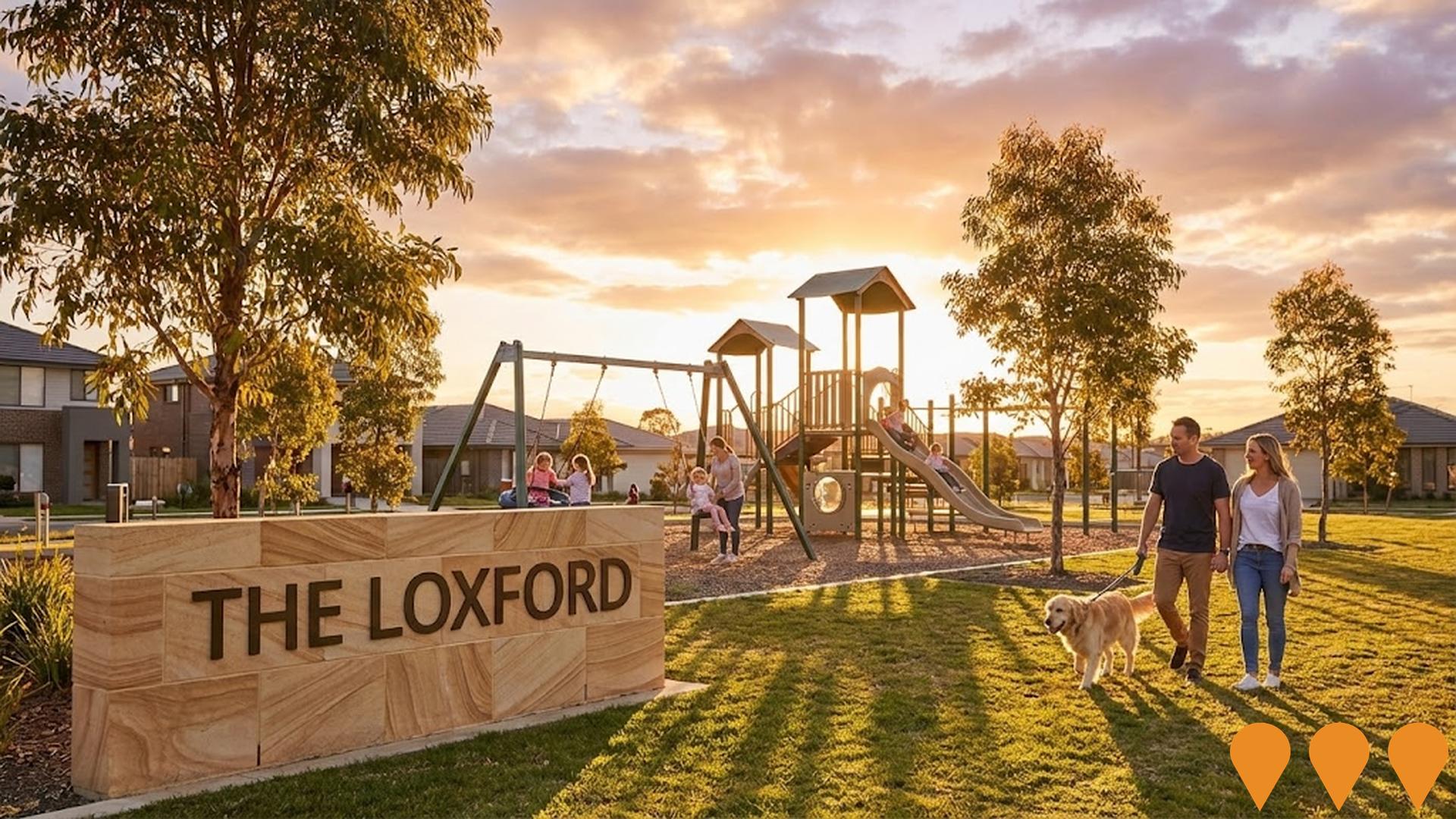
Hunter Expressway (M15)
A 39.5 km controlled-access expressway linking the M1 Pacific Motorway near Seahampton/Cameron Park to the New England Highway near Branxton, bypassing Maitland and improving safety, connectivity and travel times across the Hunter region. Opened in March 2014 with an estimated cost of about AUD 1.7 billion.

Weston Commercial Centre Masterplan
Masterplan to revitalize the Weston commercial centre through public domain improvements, enhanced pedestrian and cyclist connectivity, traffic calming, park upgrades, street tree planting, and heritage preservation to encourage redevelopment and community activation.

Employment
The labour market performance in Kurri Kurri - Abermain lags significantly behind most other regions nationally
Kurri Kurri - Abermain has a balanced workforce with both white and blue collar jobs. Manufacturing and industrial sectors are prominent, and the unemployment rate is 5.5%.
As of June 2025, there are 9,888 residents employed, an unemployment rate of 7.4% (1.9% above Rest of NSW's rate), with a workforce participation rate of 59.0%. Key employment sectors include health care & social assistance, retail trade, and construction. The area specializes in mining employment, which is 2.8 times the regional level, but agriculture, forestry & fishing has limited presence at 1.2% compared to 5.3% regionally. Local employment opportunities appear limited based on Census data comparison.
Between June 2024 and May 2025, labour force decreased by 4.2%, employment declined by 4.9%, causing unemployment to rise by 0.6 percentage points. In contrast, Rest of NSW saw employment fall by 0.1%, labour force expand by 0.3%, and unemployment rise by 0.4 percentage points. Jobs and Skills Australia's national employment forecasts from May 2025 project national employment growth of 6.6% over five years and 13.7% over ten years, with varying rates across sectors. Applying these projections to Kurri Kurri - Abermain's employment mix suggests local growth of approximately 6.0%% over five years and 12.9% over ten years.
Frequently Asked Questions - Employment
Income
Income levels sit below national averages according to AreaSearch assessment
AreaSearch's latest postcode level ATO data for financial year 2022 shows that income in Kurri Kurri - Abermain is below the national average. The median income is $51,222 and the average income stands at $60,047. This contrasts with Rest of NSW's figures, where the median income is $49,459 and the average income is $62,998. Based on Wage Price Index growth of 12.61% since financial year 2022, current estimates would be approximately $57,681 (median) and $67,619 (average) as of September 2025. Census data reveals that household, family and personal incomes all rank modestly in Kurri Kurri - Abermain, between the 28th and 34th percentiles. Income analysis shows that the $1,500 - 2,999 earnings band captures 34.3% of the community (7,937 individuals), aligning with the metropolitan region where this cohort likewise represents 29.9%. Housing affordability pressures are severe, with only 82.9% of income remaining, ranking at the 32nd percentile.
Frequently Asked Questions - Income
Housing
Kurri Kurri - Abermain is characterized by a predominantly suburban housing profile, with a higher proportion of rental properties than the broader region
The dwelling structure in Kurri Kurri - Abermain, as per the latest Census evaluation, consisted of 91.1% houses and 9.0% other dwellings (semi-detached, apartments, 'other' dwellings). This is similar to Non-Metro NSW's composition of 90.9% houses and 9.0% other dwellings. Home ownership in Kurri Kurri - Abermain stood at 30.5%, with mortgaged dwellings at 40.1% and rented dwellings at 29.4%. The median monthly mortgage repayment was $1,603, lower than Non-Metro NSW's average of $1,733. The median weekly rent in the area was $345, compared to Non-Metro NSW's figure of $340. Nationally, Kurri Kurri - Abermain's mortgage repayments were significantly lower than the Australian average of $1,863, while rents were less than the national figure of $375.
Frequently Asked Questions - Housing
Household Composition
Kurri Kurri - Abermain has a typical household mix, with a fairly typical median household size
Family households constitute 73.0% of all households, including 29.9% couples with children, 25.1% couples without children, and 16.8% single parent families. Non-family households comprise the remaining 27.0%, with lone person households at 24.3% and group households making up 2.6% of the total. The median household size is 2.6 people, which aligns with the Rest of NSW average.
Frequently Asked Questions - Households
Local Schools & Education
Kurri Kurri - Abermain faces educational challenges, with performance metrics placing it in the bottom quartile of areas assessed nationally
The area faces educational challenges, with university qualification rates at 9.0%, significantly lower than the NSW average of 32.2%. This presents both a challenge and an opportunity for targeted educational initiatives. Bachelor degrees are the most common at 6.9%, followed by graduate diplomas (1.1%) and postgraduate qualifications (1.0%). Trade and technical skills are prominent, with 44.2% of residents aged 15+ holding vocational credentials - advanced diplomas at 7.9% and certificates at 36.3%.
Educational participation is high, with 28.3% of residents currently enrolled in formal education. This includes 10.9% in primary education, 7.4% in secondary education, and 2.4% pursuing tertiary education. A total of 10 schools operate within Kurri Kurri - Abermain, educating approximately 2,543 students. The area has varied educational conditions across its schools, with a balanced provision of 8 primary and 2 secondary schools serving distinct age groups. Note: for schools showing 'n/a' in enrolments, please refer to the parent campus.
Frequently Asked Questions - Education
Schools Detail
Nearby Services & Amenities
Transport
Transport servicing is low compared to other areas nationally based on assessment of service frequency, route connectivity and accessibility
The analysis of public transport in Kurri Kurri - Abermain shows that there are 172 active transport stops currently operating. These stops serve a mix of bus routes, with a total of 50 individual routes providing service to the area. The collective weekly passenger trips facilitated by these routes amount to 699.
Residents' accessibility to public transport is rated as good, with an average distance of 229 meters from their nearest transport stop. Across all routes, the service frequency averages 99 trips per day, which equates to approximately four weekly trips per individual stop.
Frequently Asked Questions - Transport
Transport Stops Detail
Health
Health performance in Kurri Kurri - Abermain is well below average with a range of health conditions having marked impacts on both younger and older age cohorts
Health data indicates significant health challenges in Kurri Kurri - Abermain affecting both younger and older age groups. Approximately 50% (~11,454 people) have private health cover, lower than Rest of NSW's 51.9% and the national average of 55.3%. Mental health issues affect 12.2% of residents, with asthma impacting 9.9%, compared to 62.6% who report no medical ailments, slightly below Rest of NSW's 62.6%.
As of 2021, 14.8% (3,420 people) are aged 65 and over, lower than Rest of NSW's 16.9%. Senior health outcomes align with the general population's health profile.
Frequently Asked Questions - Health
Cultural Diversity
The latest Census data sees Kurri Kurri - Abermain placing among the least culturally diverse areas in the country when compared across a range of language and cultural background related metrics
Kurri Kurri-Abermain showed lower cultural diversity, with 94.3% of its residents born in Australia, 93.4% being citizens, and 97.4% speaking English only at home. Christianity was the predominant religion in Kurri Kurri-Abermain, accounting for 51.2%, compared to 55.7% across Rest of NSW. The top ancestry groups were Australian (34.3%), English (31.8%), and Scottish (8.1%).
Notably, Australian Aboriginal representation was higher at 7.8% in Kurri Kurri-Abermain than the regional average of 6.3%. Welsh (0.6%) and Macedonian (0.1%) groups also showed slight overrepresentation compared to regional averages of 0.5% and 0.0%, respectively.
Frequently Asked Questions - Diversity
Age
Kurri Kurri - Abermain's population is younger than the national pattern
Kurri Kurri - Abermain has a median age of 34, which is lower than the Rest of NSW figure of 43 and also significantly lower than Australia's median age of 38 years. Compared to the Rest of NSW average, individuals aged 25-34 are notably over-represented in Kurri Kurri - Abermain at 17.8%, while those aged 65-74 are under-represented at 8.9%. Between 2021 and present, the population aged 25 to 34 has grown from 15.7% to 17.8%, while the 35 to 44 age group increased from 11.9% to 13.6%. Conversely, the 45 to 54 cohort declined from 11.7% to 10.3%, and the 55 to 64 age group dropped from 11.5% to 10.3%. Demographic modeling suggests that Kurri Kurri - Abermain's age profile will evolve significantly by 2041, with the 25 to 34 age cohort projected to expand notably, increasing by 1,959 people (48%) from 4,121 to 6,081.




